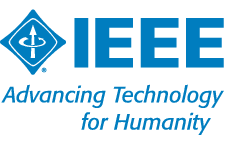

2019 IEEE Pacific Rim Conference on Communications, Computers and Signal Processing
August 21-23, 2019, University of Victoria, Victoria, B.C., Canada


August 21-23, 2019, University of Victoria, Victoria, B.C., Canada
Abstract: The use of a large number of antenna elements, referred to as Massive MIMO, is envisioned to be the key physical layer enabling technology in 5G wireless. Fundamental information theory tells us that for the multiple antenna elements to be useful, their radio frequency (RF) phase and magnitude characteristics must be known and coordinated in some way. Typically, such antenna element coordination is achieved through over-the-air channel estimation based on reference signals. In this talk, we present another approach to operate Massive MIMO based on RF coherency, i.e., the phase and magnitude characteristics of the antenna elements are precisely synchronized at RF on the antenna array. We show that the Coherent Massive MIMO architecture reduces hardware complexity which aids wide-scale commercial deployment. Moreover, RF coherency allows efficient beamforming based on environment geometry and long-term channel statistics, which can be leveraged to drive the next-generation self-optimizing intelligent radio access network (RAN).
Biography: Dr. Ng has over 15 years’ experience in wireless communications and optimization software systems, including cross-layer wireless network design, multi-antenna/multi-user systems, numerical optimization, and software architecture.
Dr. Ng is the author of more than 20 technical papers and multiple patents. His professional experience includes research and development positions with Bell Labs, MIT, Intel, Oracle and other technology companies. He received his bachelor’s degree in Applied Science from University of Toronto, and master’s and Ph.D. degrees in Electrical Engineering from Stanford University. Dr. Ng is currently a Director of Systems Engineering Products at Blue Daube Systems in New Jersey working on the next-generation Massive MIMO and beamforming optimization platform, and a Co-Chair on the Massive MIMO Working Group of the IEEE Beyond 5G Roadmap.
Abstract: Existing works focusing on security issues of multi-robot network systems usually assume that the topology is priori knowledge. However, the topology graph is not accessible for inner security policies or ID identification from the outside of the system. Thus, in this talk, we propose a statistical learning framework for multi-robot systems to infer the underlying interaction relations by observing trajectories of interacting robots. In our work, correlation algorithm adopted in Vector Auto-Regression (VAR) or diffusion model is improved and a transfer matrix estimator involving regression mechanism is proposed. In our newly proposed regression-based approach, the inference problem is converted to an empirical error function minimizing problem. We demonstrate the effectiveness of our approaches by providing theoretical guarantees and testing it on multi-robot rendezvous, formation and swarming systems. Besides, considering the link failure and creation, time slicing, dynamic window and graph mapping solutions are proposed for retrieving the dynamic interaction topology. Simulation results demonstrate the topology learning accuracy 95% in static interaction case and 90% in dynamic case. Small scale of experiments verify the feasibility of the scheme.
Biography: Jianping He (M’15) is currently an associate professor in the Department of Automation at Shanghai Jiao Tong University. He received the Ph.D. degree in control science and engineering from Zhejiang University, Hangzhou, China, in 2013, and had been a research fellow in the Department of Electrical and Computer Engineering at University of Victoria, Canada, from Dec. 2013 to Mar. 2017. His research interests mainly include the smart sensing and control, security and privacy theory and applications, distributed learning and big data analysis. Dr. He serves as an Associate Editor for the KSII Transactions on Internet and Information Systems. He was also a Guest Editor of the International Journal of Robust and Nonlinear Control, Neurocomputing, and the International Journal of Distributed Senor Networks. He was the winner of Outstanding Thesis Award, Chinese Association of Automation, 2015. He received the best paper award from IEEE WCSP’17, the best conference papers award from IEEE PESGM’17, and the finalist best student paper award from IEEE ICCA’17. He is the recipient of China National Recruitment Program of 1000 Talented Young Scholars.
Abstract: The past few years have witnessed the prosperity of wireless technologies in various aspects. Among them, mobile edge computing (MEC), as an emerging communication scheme, has attracted tremendous attentions. MEC utilizes computation/storage advancements for mobile devices/nodes and places these powerful devices/nodes at the network edge for computation offloading/content storage, mainly for minimizing communication latency and improving computation efficiency. In this talk, we will introduce some key MEC technologies and challenges. Specifically, MEC offloading technologies, as important remedies for less-powerful devices, will be elaborated. We propose a new metric called computation efficiency, which is defined as the total number processed in MEC system divided by total energy consumed, to evaluate the overall system performance. Performance results and insights will be presented. We will also address future trends in this interesting topic and summarize some potential research challenges and future research directions.
Biography: Dr. Rose Hu is a Professor in the Electrical and Computer Engineering Department and Associate Dean for research of College of Engineering at Utah State University. She also directs Communications Network Innovation Lab at Utah State University. Her current research interests include next-generation wireless system design and optimization, Internet of Things, Cyber Physical system, Mobile Edge Computing, V2X communications, artificial intelligence in wireless networks, wireless system modeling and performance analysis. Dr. Hu received the B.S. degree from the University of Science and Technology of China, the M.S. degree from New York University, and the Ph.D. degree from the University of Kansas. Besides a decade academia experience, she has more than 10 years of R&D experience with Nortel, Blackberry, and Intel as a Technical Manager, a Senior Wireless System Architect, and a Senior Research Scientist, actively participating in industrial 3G/4G technology development, standardization, system level simulation, and performance evaluation. She has published over 200 papers in top IEEE journals and conferences and holds numerous patents in her research areas. She is an IEEE Communications Society Distinguished Lecturer Class 2015-2018. She was a recipient of prestigious Best Paper Awards from the IEEE GLOBECOM 2012, the IEEE ICC 2015, the IEEE VTC Spring 2016, and the IEEE ICC 2016. She served as the TPC Co-Chair for the IEEE ICC 2018. She is currently serving on the editorial boards for the IEEE Transactions on Wireless Communications, the IEEE Transactions on Vehicular Technology, the IEEE Communications Magazine and the IEEE Wireless Communications. Dr. Hu is senior member of IEEE and a member of member of Phi Kappa Phi Honor Society.
Abstract: 5G presents major test challenges compared to previous wireless standards. This is in part due to the deployment of systems which will use licensed mmWave spectrum. Many wireless designers and service providers are on a steep learning curve with 5G New Radio Specification. New frequencies, radio formats and propagation challenges demand new approaches to test. This talk will touch on the measurement challenges facing designers and service providers as they develop and deploy these new systems. These challenges include over the air (OTA) test, new wideband modulation analysis and channel characterization.
Biography: Steve Hall is an RF/Microwave Applications Specialist with Keysight Technologies. After graduating with a Bachelor of Science in Engineering in 1980, Steve began his career with Hewlett-Packard (Canada) Ltd. Initially, Steve provided customer support in Western Canada for technical computers and their real-time operating system. One of Steve’s first assignments was to support the development of one of the world’s first cellular networks. A few years later, Steve switched over to supporting various types of electronic instrumentation; eventually settling on RF/microwave solutions. Through the transitions of Agilent and Keysight he has held a series of positions. This includes 2 years as Keysight’s Americas 5G Wireless Business Development lead where he interacted with a wide variety of companies doing early 5G development and influenced investment at Keysight to meet those customer needs. Steve currently serves as RF/Microwave Applications Specialist responsible for supporting customers in, BC, Alberta and the US Pacific Northwest. Included in the applications Steve supports are 5G, 802.11ad/ay and other wireless standards.
Abstract: The proliferation of wireless networks and services has led to increasing demands for radiofrequency spectrum (spectrum). Satisfying these demands by issuing new licenses for every new service is challenging and may not be sustainable, partly due to the scarcity of unassigned spectrum. The issue of managing spectrum resources in a sustainable manner has been a hot topic of discussion among government and commercial entities. Several strategies and frameworks for sustainable spectrum management have been recently proposed to meet current and future spectrum needs. This talk focuses on research and innovation towards sustainable spectrum management for 5G and beyond. Specifically, a framework that addresses key issues regarding understanding spectrum utilization, optimizing its use, and increasing its supply will be presented. The application of data-driven approaches that leverage machine learning and artificial intelligence techniques to facilitate effective and efficient spectrum assignments will be discussed, along with current challenges and future research opportunities.
Biography: Dr. Humphrey Rutagemwa is a Research Scientist at the Communications Research Centre (CRC) Canada. His research interests are in the area of spectrum management and wireless communications, with a current focus on applications of machine learning and artificial intelligence. He holds a B.Sc. degree (with first-class honours) from the University of Dar es Salaam, and M.A.Sc. and Ph.D. degrees from the University of Waterloo. Dr. Rutagemwa has published more than 50 peer-reviewed journal articles, conference papers and book chapters. He has contributed to several international standard committees. Recently, Dr. Rutagemwa served as Associate Editor for the International Journal of Vehicular Technology and as Editor for the IEEE/KICS Journal of Communications and Networks. He also served as a track co-chair for the IEEE VTC2017-Fall conference. He is a senior member of the IEEE.